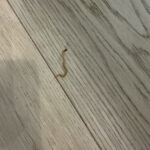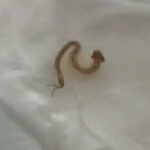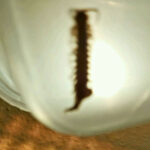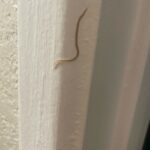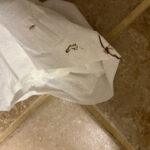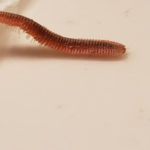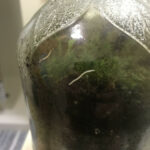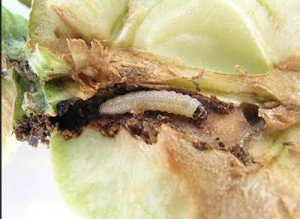It’s brown, it’s long, it’s shiny – so it must be a worm, right? Not necessarily. While many worms are brown in color, some can be shiny, and most are long, there are several sure signs that the animal you just found slithering around on your floor is probably a centipede – not a worm. Worms do not typically have “feelers” while some centipedes do. In fact, some centipedes’ feelers are so elaborate that they are usually the first things us humans will notice. Another sure sign that the animal is a centipede and not a worm is the way the animal moves. Centipedes move really fast, in a sliding motion. Worms writhe, they wiggle, and they twist. Worms are also much slower than centipedes. Worms can move fast when faced with an attacker, but in general, they inch along in a slow motion.
One of the many centipedes that suffer from mistaken identity is the “stone centipede.” Stone centipedes, like all centipedes, belong to the myriapedes. These creatures have many legs (15 pairs), although it would be tough to count them all if you spot one. Their bodies are long and slim and they consist of 15 shiny brown segments.
The stone centipede is fast and it is poisonous to its prey. It feeds on insects and other invertebrates. Stone centipedes belong to the Order Lithobiomorpha and they are typically found under rocks and logs, in gardens, in decaying matter, and in soil. But much like all insects and animals, they can find their way into homes, garages, and other structures.
Another shiny brown centipede that may look like a worm is the cryptops hortensis. The cryptops hortensis has 21 pairs of legs and it has no eyes. It is typically found in gardens.
Some millipedes may resemble worms as well. Just a few include the spotted snake millipede (blaniulus guttulatus)
The blunt-tailed snake millipede (cylindroiulus punctatus) actually looks more like a worm than a millipede. It is dull brown in color and it has around 200 tiny legs. Its 200 legs don’t make it very fast though. The blunt-tailed snake millipede may move just as slow as a worm. Much like a worm, this millipede may roll itself up when it feels threatened and it can be found in gardens and woods.
Centipedes and millipedes are not usually dangerous to humans and animals, although some species have venomous bites. The most dangerous centipede however, is the Japanese Mukade. Centipedes, venomous or not, will bite. The bite can cause swelling and it will definitely hurt, but it’s not fatal. If you (or your pet) have a centipede bite, simply wash the area with soap and water and apply hydrocortisone cream. An ice pack can help reduce swelling. For humans, ibuprofen or acetaminophen will work to alleviate any pain. If an infection develops, apply an antibiotic cream. Infection isn’t very common, however.
If you notice more than a few centipedes or millipedes indoors and you want to get rid of them, insecticides such as Drione Dust and sticky traps are effective. Centipedes and millipedes prefer moist spaces, so keeping your home nice and dry should keep them away.
All About Worms is always free, always reader-supported. Your tips via CashApp, Venmo, or Paypal are appreciated! Receipts will come from ISIPP Publishing.



